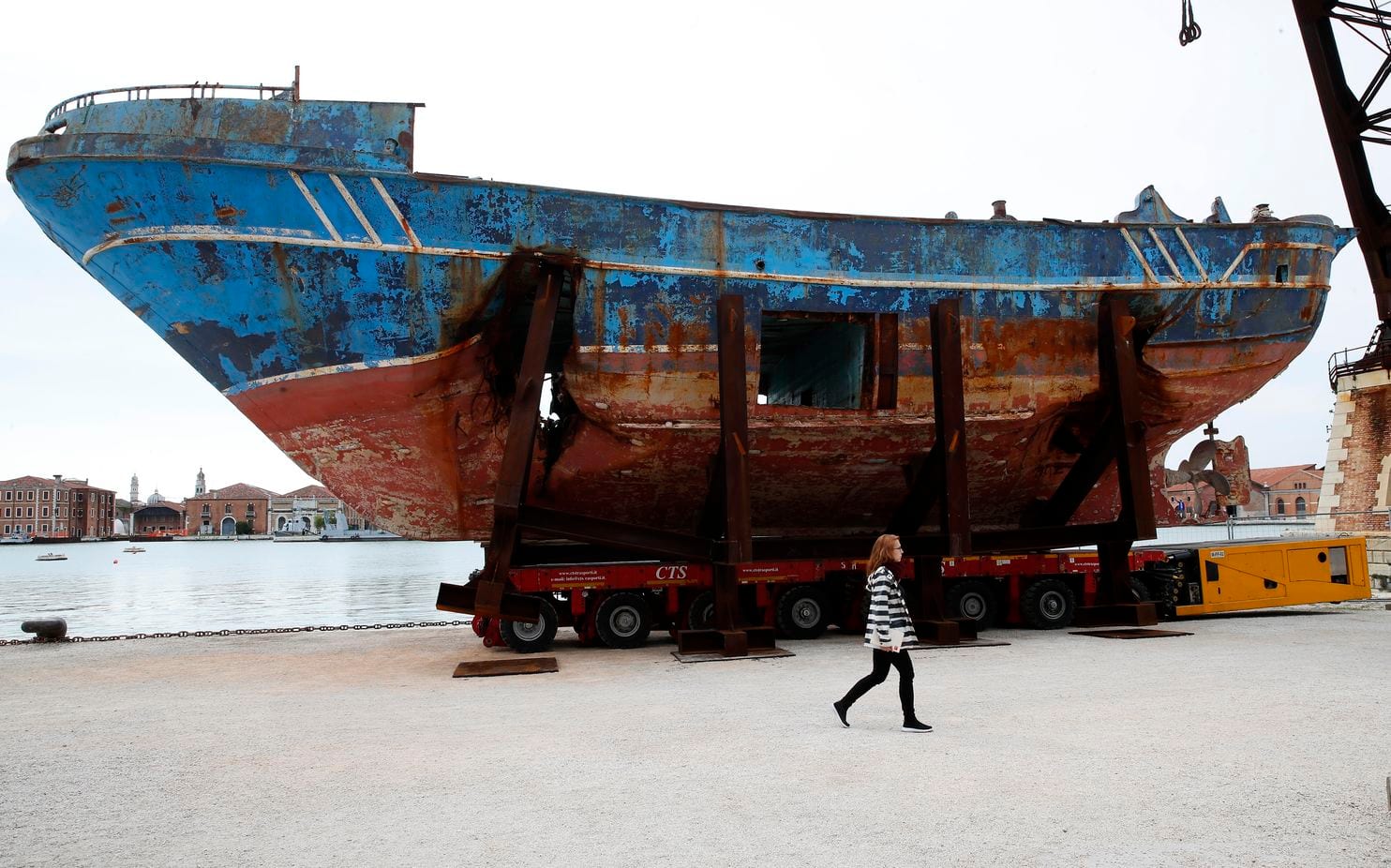In the Egypt-based web magazine Mada, curator and artist Alexandra Stock offers a lacerating and impassioned critique of the most controversial artwork at this year’s Venice Biennale – Christoph Büchel’s Barca Nostra, a boat that in 2015 sunk to the bottom of the Mediterranean with hundreds of migrants inside, and was later recovered and put on display for the Biennale. Sharp writes that she is wary of giving Barca Nostra any more publicity, since it has already been covered extensively my the mainstream press. But she feels that this coverage has largely granted a pass to Büchel’s “violent” artwork, failing to give it the serious criticism it deserves. She writes: “I am repelled at how the artist has created a, well, vessel that is capable of neutralizing any and all criticism directed at it, an artwork of the era of fake news.”
You can check out an excerpt from Sharp’s moving piece below, and read the entire text here.
Call me cynical, but I don’t think this project is genuine. This artwork isn’t about the boat, or the people who died in and on it. All I can see is Büchel daring his audience to watch as he strips these dead people of their humanity a second time, and spends €33 million while doing it. It’s a slippery slope to argue that money spent on arts and culture could be used elsewhere, and please don’t mistake this following information for an attempt at making that point. But while the press release says the project “opens up the possibility of actively using Barca Nostra as a vehicle of significant sociopolitical, ethical, and historical importance,” let’s check in with an entity doing this in the present and not creating a monument for a forced past tense. According to a friend of mine who’s a healthcare professional in an institution working with refugees, a budget of this size could fund two clinics — one for pediatric and post- and pre-natal care, including family planning and vaccinations, and one for mental health care for victims of torture and sexual violence, including free medication — for about 10 years.
Barca Nostra is a performance. It’s watching a middle-aged European man metaphorically drape himself in the violent deaths of migrants whom he doesn’t bother to name and then, as a second act, attempt to pin some form of vague guilt on his audience. I hate how Büchel tries to implicate visitors to the biennale in this mess, framing the people strolling past the shipwreck as if they’re as unaffected by what happened in and on this chunk of metal as they appear. He himself stripped the work of any context. There are no signs, no labels; no text anywhere. We’re not given anywhere near enough information to engage or contemplate or act or form an independent thought around this work that doesn’t involve the artist himself. It’s ready-made alright, but all roads lead back to the artist. I don’t think the project proves anything beyond how simplistically Büchel himself — not to mention his curator, who made this project possible — views the world.
Image via Washington Post.
